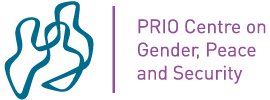As Stathis Kalyvas notes in his preface to this book, most current conflict are internal, typically in very poor post-colonial countries. Although such conflicts vary considerably, they are generally discussed in what he calls ‘the big three’: they lead to widespread disorder, they produce massive and gratuitous violence, and they reduce civilians to victims. This edited volume introduces a new concept in the study of civil war: that of civilian protective agency, ‘actions carried out by individuals and communities to protect themselves and/or others in violent settings’. The editors distinguish between four forms: Evasion (actions to escape the reach of armed actors to avoid immediate danger, recruitment, control and/or persecution), resistance (the refusal to act according to implicit and explicit demands by armed groups), rescue (actions to protect others by people who are not themselves directly targeted by armed groups), and adaptation (maintaining social identities that sustain hope and enable collective action). This perspective is pursued in twelve insightful case studies, divided into three sections: forms of civilian protective agency, violent forms, and the role of external actors. The cases range from ranging from civilian resistance to the Holocaust in the Low Countries, to vigilantism (autodefensa) in Mexico, and the role of UN peacekeeping. The concluding chapter discusses the dynamics of civilian protective agency, triggers, facilitators, and effects, and unintended consequences. Although many chapters discuss positive consequences of civilian protective agency, the concluding chapter acknowledges that there may also be negative consequences. The book provides much food for thought and introduces a rich research agenda, but a question remains whether the concept of civilian protective agency may be overly broad.

Jana Krause, Juan Masullo, Emily Paddon Rhoads & Jennifer Walsh, eds (2023) Civilian Protective Agency in Violent Settings. Oxford: Oxford University Press. 266 pp.
Jana Krause, Juan Masullo, Emily Paddon Rhoads & Jennifer Walsh, eds (2023) Civilian Protective Agency in Violent Settings. Oxford: Oxford University Press. 266 pp.
Other book notes by Nils Petter Gleditsch
2025
Ashok Swain (2025) Climate Security, by Nils Petter Gleditsch
2024
Craig S Brown, ed. (2024) Gene Sharp. A Life Devoted to Exploring Nonviolent Actions by Nils Petter Gleditsch
Brian Martin (2024) Better? Is the World Going Down the Drain? by Nils Petter Gleditsch
2023
Alex Epstein (2022) Fossil Future: Why Global Flourishing Requires More Oil, Coal and Natural Gas, Not Less, by Nils Petter Gleditsch
Craig S Brown (2022) Steve Wright: A Spy for Peace, by Nils Petter Gleditsch
2022
Laurence Saffer (2022) Plumber, Lecturer, Pacifist, Spy (?): How Uncle Cyril Saved the World. Cyril Pustan 1929–1977, by Nils Petter Gleditsch
Martin J Levy (2021) Ban the Bomb! Michael Randle and Direct Action against Nuclear War, by Nils Petter Gleditsch
Ronald Edsforth, general editor (2020) A Cultural History of Peace. Vol. 1: In Antiquity (Sheila L Adger, ed.), 2: In the Medieval Age (Walter Simons, ed.), 3: In the Renaissance (Isabella Lazzarini, ed.), 4: In the Age of Enlightenment (Stella Ghervas & David Armitage, eds.), 5: In the Age of Empire (Ingrid Sharp, ed.), 6: In the Modern Age (Ronald Edsforth, ed.), by Nils Petter Gleditsch
2020
Michael A Cohen & Micah Zenko (2019) Clear and Present Safety: The World Has Never Been Better and Why That Matters to Americans, by Nils Petter Gleditsch
Michael Mandelbaum (2019) The Rise and Fall of Peace on Earth, by Nils Petter Gleditsch
Miriam F Elman; Catherine Gerard; Galia Golan & Louis Kriesberg (2019) Overcoming Intractable Conflicts: New Approaches to Constructive Transformations, by Nils Petter Gleditsch
Bjørn Lomborg, ed. (2018) Prioritizing Development: A Cost Benefit Analysis of the United Nations' Sustainable Development Goals, by Nils Petter Gleditsch
Geir Lundestad (2019) The World's Most Prestigious Prize: The Inside Story of the Nobel Peace Prize, by Nils Petter Gleditsch
2018
Hans Rosling, with Ola Rosling & Anna Rosling Rönnlund (2018) Factfulness: Ten Reasons We're Wrong about the World – and Why Things Are Better than You Think, by Nils Petter Gleditsch
Daniel Ellsberg (2017) The Doomsday Machine: Confessions of a Nuclear War Planner, by Nils Petter Gleditsch
2017
Frank Dikötter (2016) The Cultural Revolution. A People's History 1962–1976, by Nils Petter Gleditsch
2016
Ewan Harrison & Sara McLaughlin Mitchell (2014) The Triumph of Democracy and the Eclipse of the West, by Nils Petter Gleditsch
Piki Ish-Shalom (2013) Democratic Peace. A Political Biography, by Nils Petter Gleditsch
2015
Frank Dikötter (2013) The Tragedy of Liberation. A History of the Chinese Revolution 1945–1957, by Nils Petter Gleditsch
2014
Keith Lowe (2012) Savage Continent. Europe in the Aftermath of World War II, by Nils Petter Gleditsch





